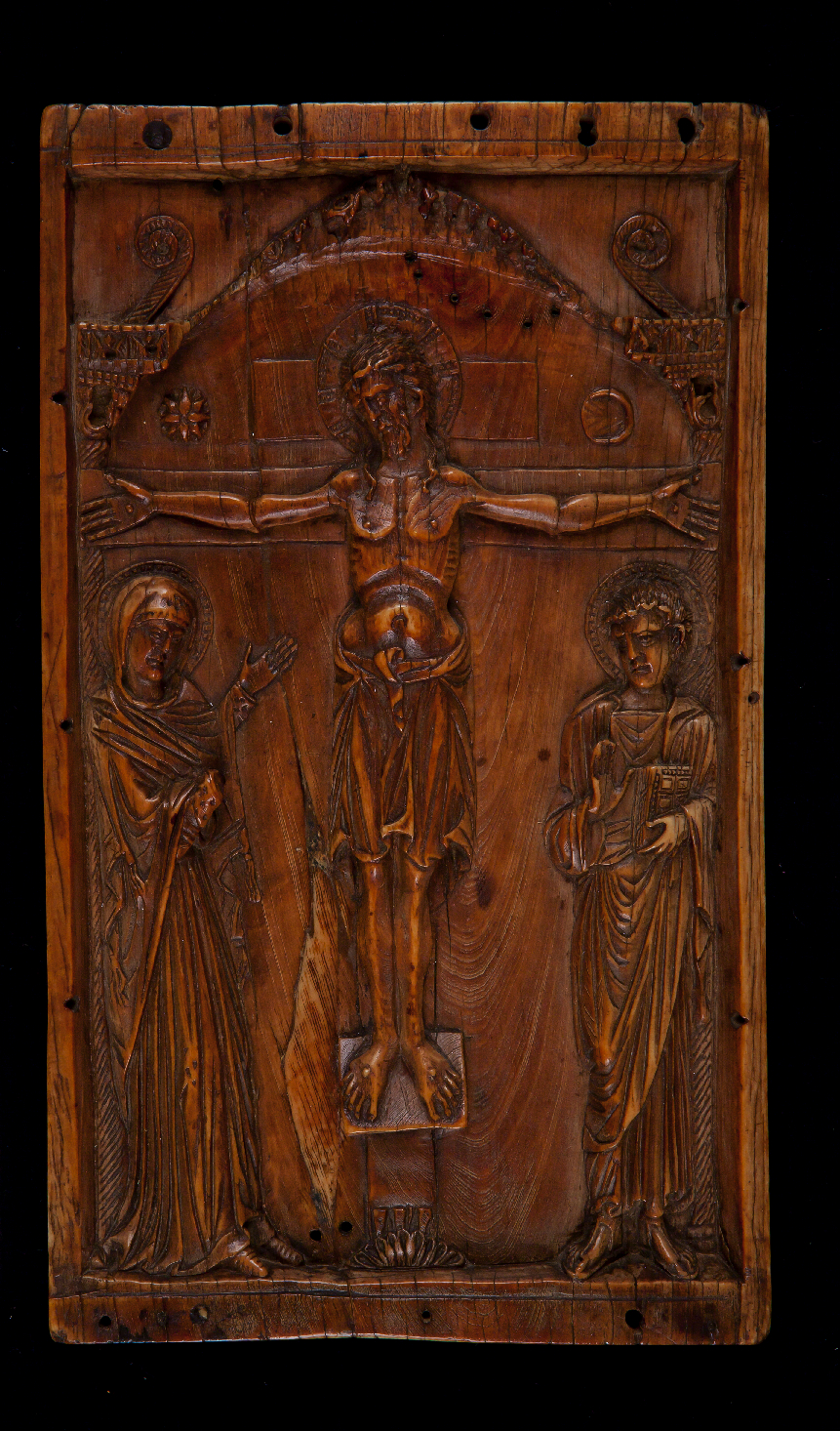
- Byzantium, late 10th century, early 11th century
- Ivory
- Inv. 100
Plaque with crucifixion
This plaque, showing the dead figure of Christ on the cross, flanked by the Virgin and St John, would have been the central panel of a triptych originally used for personal devotion and later adapted for use as a plaque on a binding. Although fixing ivory plaques to bindings was unknown in Byzantium, many such pieces were sent to the West as diplomatic gifts, acquiring new functions as they were incorporated into luxury bindings for precious manuscripts.
Both the type of the figures and the composition are clearly Byzantine, while showing some signs of Greek and (to a lesser extent) Asian influence. Christ’s protruding abdomen derives from Greek art, whereas the thorax, with prominent chest, sternum and ribs, shows Assyrian influence. Christ’s face, depicted with a beard and long strands of shoulder-length hair, is part of a Syrian legacy, as are the sun and the moon, which appear on either side of the cross.
The similarity between this and many other contemporary plaques is due to the mass production of the same motifs by craftsmen (rather than artists) for a clientele that was wealthy but undemanding in terms of originality.
Engel-Gros Collection; Ripaille. Acquired by Calouste Gulbenkian throu Demote, at the sale of the Engel-Gros Collection, Georges Petit Gallery, Paris, 30 May to 1 June, 1921.
H. 22 cm; W. 13 cm
Figueiredo 1999
Maria Rosa Figueiredo, Catalogue of European Sculpture, vol. II. Lisbon: Calouste Gulbenkian Museum, 1999, pp. 12–17.
Lisbon 2001
Calouste Gulbenkian Museum. Lisbon: Calouste Gulbenkian Museum, 2001, p. 84, cat. 60.